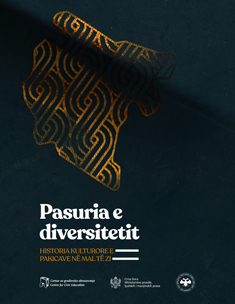
We kindly inform you that, as long as the subject affiliation of our 300.000+ articles is in progress, you might get unsufficient or no results on your third level or second level search. In this case, please broaden your search criteria.

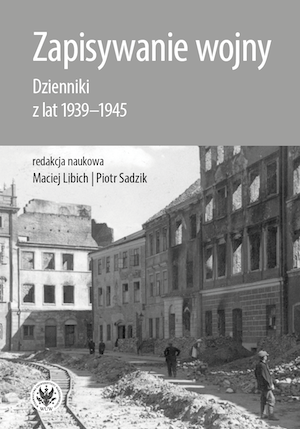
The author focuses on the Second World War, but draws attention to the deep genealogy of the phrase “wartime diaries”, treating them as a special form of recording limit situations in which a person is confronted with violence and death, which go beyond the ways of coping with these experiences, and the community is faced with the horror of mass extermination. Culture and civilization are in a state of catastrophe, destruction and collapse. Examples of records of such experiences in the past include plague logs and pogrom chronicles. The concept of “wartime diaries” has two basic features: 1. they are written in borderline situations and contain a record of borderline experiences; 2. the primary distinguishing criterion is the proximity of the record and the experience. The author presents the topography of diaristic records and the circles of experience they testify to. As for the topography of writing, the observation field was narrowed only to the area of the Warsaw, Łódź, Kraków, Vilnius and Kaunas ghettos. From the various experiences within the thematic spectrum of the diaries, the author presents two: the hunger in the ghetto and the siege of the city of Warsaw and Leningrad. The article proposes to expand the genological area of the diaries and draw attention to diaristic borderlands and genological hybrids. This broadened spectrum of forms would fit between the diary and the chronicle, and between the letters and the diary. There are also “texts in extremis”, which can be considered a unique“ ultimate diaristic record”. This separate group consists of various types of inscriptions on the walls of torture rooms and prisons, places where convicts are held. The act of writing and the moment of experience merge.
More...
In this article the author describes the change in the status of wartime and Holocaust diaries which has taken place in Poland in the last fifty years. He distinguishes four main phases of the perception of war diaries: from document, through testimony, writing practice, to literature. They are chronological and typological in character, for although their temporal dynamics is clearly discernible, at the same time they repeatedly overlap, co-exist and even in a certain sense – compete with each other. In conclusion the author points out that the diaries included in the literary space (through the category of “personal document literature”) do not so much supplement or enrich this space, as “burst” it from within. War diaries seen as literature change our view of the literature itself and its place in the space of the Polish writing practices of the twentieth century.
More...
The notion of the aid to the Jews during the Holocaust that prevails in the Polish culture has been so detached from the historical truth that it requires intervention in the form of counter-history and the interconnected counter-memory. Access to real experiences from the occupation is provided by numerous testimonies written “there and then,” principally including diaries and memoirs. The recorded experiences of both the Poles and the Jews present unobvious and ambivalent aspects of the aid relations that continued despite the surrounding threats. The article is an attempt to confront the Polish discourse about the Righteous with the testimonies by Brandla Siekierkowa, Karol Rotgeber, Jerzy Feliks Urman, and Calek Perechodnik.
More...
The paper discusses "Dziennik wojenny" [War Diary] by Leopold Buczkowski. It poses a question concerning the origins of the text and the subsequent stages of its development. That is a challenging task since the original version of the work is not available. Additionally, the lack of the first version makes it difficult to examine the so-called material sphere of the diary. It can be reconstructed only based on the preserved manuscript version. The author of the paper also discussed "Dziennik wojenny" against the background of other early works by Buczkowski ("Wertepy", and "Czarny potok", a collection of a few dozen poems), from the perspective of editorial and philological problems. He also demonstrates the need for a new edition of "Dziennik wojenny", and indicated the errors committed in the existing edition.
More...
The article is an attempt to describe the wartime diaries of Anna Pogonowska. Drawing on literary anthropology, genetic criticism and the works of Paweł Rodak, the author of the article describes both the materiality of Pogonowska’s notes, the themes they present, and their pragmatic functions. The author describes the state of anomie and the disintegration of the world in times of war as depicted in the diaries, as well as the feelings of isolation and boredom experienced by the young diarist. Moreover, the author of the article foregrounds the diarist’s discrete allusions to the Holocaust and reflects on her social position during the war.
More...
Written in four languages in the margins of a French book, the diary of Abram Icchak Łaski remained anonymous for many years, although it aroused a keen interest in Holocaust scholars both in terms of its form and content. Only recent research has allowed to discover the author’s name. The article presents new possibilities of text interpretation, which appear along with getting to know the identity of the diarist and his milieu.
More...
This article analyzes the wartime fate of two archival and library collections and two archivists/librarians who took care of these collections during the hostilities in two cities – Lviv and Warsaw. The analysis was based on diaristic documents: Aleksander Czołowski’s "Dziennik wypadków listopadowych" [Diary of November Events] and Józef Grycz’s "Dzienniczek z okresu powstania warszawskiego 1944 roku" [Diary of the 1944 Warsaw Uprising]. The first diary describes the events that took place in Lviv during the Polish-Ukrainian war in 1918, especially Czołowski’s efforts to take care of the city’s archival collection. The second diary highlights the Warsaw Uprising struggles in 1944 and, above all, Grycz’s personal struggle to protect the collections of the National Library from destruction or robbery. Both diaries are interestingly profiled documents of their time. They present the battles of Lviv and Warsaw, respectively, from an unusual perspective: that of the institutions of science and culture, as well as the documents and books collected in those institutions, whose material dimension suddenly became fundamental (because fundamentally endangered). In this way, both diaries make us aware that wars, especially those fought in urban areas, are both tragedies of people and hecatomb of things, including books. At certain points both diaries also shed untypical light on events integrated in the dominant Polish discourse and rarely narrated in a way that deviates from it.
More...
In my paper I focused on presenting some of the notes made by Wacław Borowy in 1943–1944 that are unknown to a wide audience. I look not only at the content of the scholar’s diary, but also at its physical aspect. By referring to the works of Paweł Rodak, Philippe Lejeune and various achievements of genetic criticism, I try to answer some of the key questions. Why does Borowy follow the actions of the Soviet troops? How does he perceive life in the occupied capital city? How does he hide his involvement in the works of the underground University of Warsaw? Another field of research are scholar’s notes that were made during the Warsaw Uprising. The laconic, “encrypted” (according to Maria Straszewska’s term) entries, which were predominant up to that time, are replaced with notes in which Borowy makes many detailed comments regarding the uprising. Thus the reader of this article will get to know a hidden face of Wacław Borowy. The man who tries to keep in his tiny notebooks the memories of the world in which, in his own words, “besides sins, there were so many great values!” A witness to history who reads subsequent decisions concerning the post-war fate of Poland with curiosity.
More...
This article is an attempt to provide an analysis of the diary kept by the poet Konstanty Ildefons Gałczyński during his imprisonment in Stalag-XI POW Camp in Altengrabow. Written in 1941, the diary remained unpublished until some 50 years after the author’s death. We will not find any of the poet’s stylistic methods in the entries. Religious themes dominate, as does the necessity to adapt personality traits. The diary throws light on the poet’s post-war works.
More...
In the article I conduct the analysis of Stefan Themerson’s wartime diaries. Notes from 1940–1942 are exemplified in seven volumes of manuscripts, currently held in the Themerson Archive in the National Library of Poland in Warsaw. I point out that the intimate practice of the avant-garde artist was an incidential activity. I assume there were not any further or previous traces of this kind of autobiographical writing. Combining the methods of life-writing studies and genetic criticism, I put forward a thesis that the diaries of Themerson are an interesting record of the formation process of Themerson anti-political statement.
More...
The subject of this chapter is the issue of the daily dating of poems written between 1939 and 1945. The key question concerns the significance of this particular practice. The notion of kairos proves useful in explaining it.
More...
This article is the result of a review of the writing materials of Krzysztof Kamil Baczyński to identify manuscripts with the characteristics and functions of a diary, and at the same time an introduction to genetic research on the poet’s codexes. The first part of the article contains a comparison of the manuscripts in the above mentioned key, leading to a presentation of the predominance of lyric autographs: numerous and related to the various functions they had, with a marginal share of non-literary texts, among which – if it ever existed – a diary could be found. Brief analyses of a letter from Stawisko from March 1942 and selected author’s footnotes from [Codex 39/42] demonstrate the secondary role of personal notes in relation to the lyric, which is the poet’s way of “noting” experiences and testimonies. The second part introduces the study of the codexes, analysing those elements of them that correspond in functionality to the elements of a diary. Particular attention is paid to the components and features of notebooks relating to the temporality of their creation considered in various aspects: dating, chronology, the period of the creation of notebooks, the mode and regularity of their keeping. [Codex 39/42] and [Codex 42/44] are framed as the result of a writing practice similar to diary-keeping with respect to their material integrity, which is an introduction to the study of the poet’s notebooks taking into account their material and pragmatic dimensions.
More...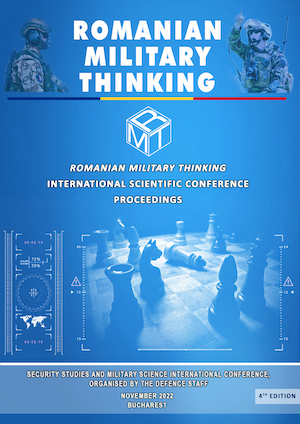
The purpose of this article is to highlight the aspects of the evacuation operations from Bulgaria, executed by the Romanian troops participating in the military campaign in the summer of 1913, a chapter of the national military history less researched. The article is based on the documents studied in the national archives. In the summer of 1913, in the face of an unstable Bulgaria, Serbia and Greece decided to conclude a defensive alliance, a process completed on 19 May/1 June 1913, which aimed to establish their own interests in Macedonia against the Bulgarian ones. Moreover, to the tensions between the former Balkan allies were added the armed incidents near the outposts of the three armies that had the mission of preserving the conquered positions. In this context, Romania’s position became a very important one, in relation to the obligations assumed by the treaties concluded at international level, which is why Romania had to make a decision regarding participation in the ongoing war.
More...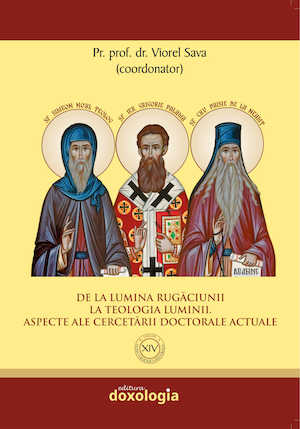
The Holy and Great Council of the Orthodox Church is admittedly one of the most important Orthodox ecclesiastical events of the 21st cent. The Council’s 2016 convening was finally made possible after a very long and arduous preparatory process of circa 93 years, in which process the Patriarchate of Romania appears to have played an important and constructive role. In fact, the Church of Romania, in 1920, shortly before the official preparation begins, dispatched Prof. Dragomir Demetrescu to the Ecumenical Patriarchate with the mandate to exchange views on the possibility of convoking a “Council of the Orthodox Churches”, and to propose potential issues to be considered in such a Council. Since then, the Church of Romania has responded positively to all the relevant invitations of the Great Church of Constantinople and participated constructively in all the preparatory bodies and phases of the Holy and Great Council, while the Romanian Primates - from Patriarch Myron to Patriarch Daniel - demonstrated a profound synodical awareness and fought devotedly for the unity and cooperation of the Orthodox Churches. The current article has a double scope: on the one hand, it presents the historical contribution of the Patriarchate of Romania at the beginning of preparation of the Holy and Great Council of the Orthodox Church, and on the other hand, it attempts to evaluate it.
More...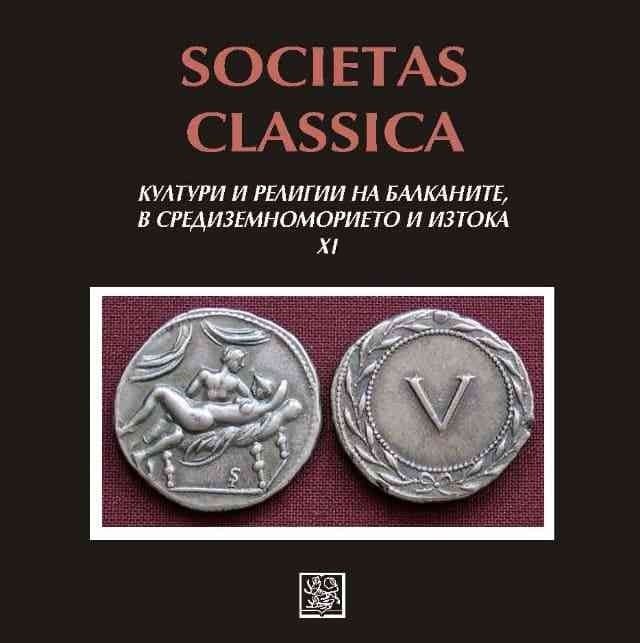
This article studies the reasons for the emergence and development of the Mahjar literature in the historical context of the United States from the late 19th century to the early 20th century. The creation of communities to support the Arab and national spirit and culture and many other organizations, whose primary purpose is to preserve the language, religion, and culture of Arab immigrants is considered as well. The role of periodicals, which play a central role in the development of the Mahjar literature is also pointed out. The migrant writers operated in more organized way through the literary communities that they had established during that time. These literary societies established both in the USA played a significant role in the development and promotion of the Arab literature in the West.
More...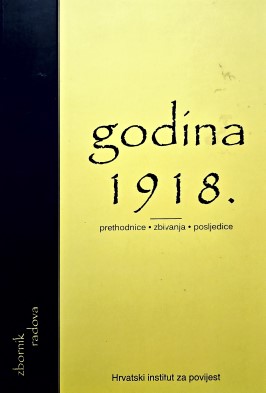
With the outbreak of the war and the collapse of the Austro-Hungarian Monarchy Bosnia and Hercegovina became a centre of “national concentration” and the newly proclaimed state. The government of the Kingdom of Serbs, Croats, and Slovenes was taken over by the Serbian political elite which ascribed to Bosnia and Hercegovina the role of a unified area which would prevent the creation of any kind of Croatian state while strengthening the newly created state and the Serbian dominance within it. The new government established its authority through terror and violence directed against the non-Serbian peoples. It attempted to undermine every political action or publicly expressed demand of the Croats for a federal unit, or an independent state. Mu-slims saw their land confiscated through the Agrarian Reform, which while in part brought to an end feudal relations and corrected historical injustices, also materially ruined numerous families. In harmony with Serbian political tradition the Constitution and other agreements merely acted as “manifestations” to appease “European public opinion.” The interests of other (non-Serbian) peoples were treated as illegitimate or anti-state activities: nationalism and separatism. Various repressive measures were directed at individuals deemed to be the carriers of these interests. Territories in the new state toward which the government lacked sympathy for national or political reasons and which did not figure into particular plans for unitarism were systematically destroyed and neglected. The key argument for unitarism and centralization was a call to the rights and “decisiveness” of the Serbian people, which was intermixed among the others to bring them to “belong to Serbia.” In this spirit the Vidovdan Constitution was brought into being which eliminated historical rights and historical lands, and created the basis for further unitarism and centralization of the state, but likewise strong reasons for dissatisfaction and resistance. States are determined by the nature of their formation. The Kingdom of Serbs, Croats, and Slovenes came into existence due to historical circumstances as an intellectual creation and not the result of national development. Primarily, violence was used to impose “unity” and centralized government.
More...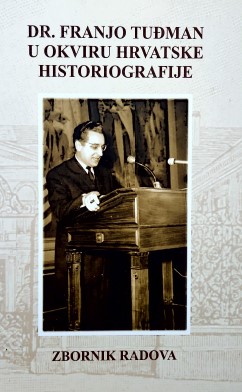
Ivo Pilar, Ph. D., (1874-1933), attorney-at-law, completed his brochure The World War and the Croats (Svjetski rat i Hrvati) in March 1915. It was published in Zagreb that same year. Knowing that the authorities of the Austro-Hungarian Monarchy would not be pleased with some of his theses, Pilar published the brochure under the pseudonym Dr. Juričić. The author’s fears of a possible negative reaction to his geopolitical ideas were not ungrounded, since the state’s censor abridged Pilar’s original text thoroughly before he allowed it to be published. The second edition of Pilar’s brochure, containing many sentences that had been censored out of the first edition, most of them pertaining to the Central Forces’ unfaithful ally Italy, was published two years later. In his analysis of the political situation at the beginning of World War I, Pilar concluded that the times were fateful for the Croatian people, since the outcome of the war was going to decide with which country the Croatian territories would side in the long run. Tuđman felt that Pilar’s views were a reflection of the ideas of all the factions in Croatian politics that sought to solve the Croatian national question within the confines of the Austro-Hungarian Monarchy and within the Central European geopolitical territory. Even though Pilar’s basic hypothesis had proved wrong (he assumed Germany and Austro-Hungarian Monarchy would win World War I), some of his ideas, particularly the ideas about the geopolitical position of Croatian territories and their historical fate, still hold their original value.
More...
As a historian, Franjo Tuđman arrived to important conclusions about the relations between Croats and Serbs and the internal and external causes of the situation and the crisis in the country that was ultimately going to cause its breakdown in his research of the Kingdom of Serbs, Croats and Slovenes/ Yugoslavia in the period between 1918 and 1941, and in his research of Croatia’s position therein. Analyzing archive sources and other materials, along with relevant literature, Tuđman looked into the organization and the actions of the repressive system of monarchist Yugoslavia’s regime in Croatian territory and their dealings with the Croatian people. He recognized the basic elements of Serbian hegemony in the Kingdom of Serbs, Croats and Slovenes/ Yugoslavia, the Vidovdan centralist regime and the struggle to preserve it at all costs, proving that it would all have been impossible without the principal exponents – the king, the army, the gendarmerie, the police, the state administration, the judiciary, the government, and the political parties. Tuđman proved how King Alexander Karađorđević, supported by his loyal army and gendarmerie, established himself as the top authority in the country since the very beginning in 1918, and how Serbian political and ruling elite gathered around his court and him personally. The constitution gave him authority over the parliament, which he made full use of in the practice, and the parliament held a subordinate role for the entire time. This role of the king and his courtiers would remain unchanged until the end of monarchist Yugoslavia. The army with the king at its helm was, in Tuđman’s opinion, the second most important factor. From the very beginning the army had been built as the principal instrument of Great-Serbian hegemonist and counter-national politics and of Serbian hegemony, fully living up to the role in reality, preserving the monarchy and its centralist and hegemonist system, and serving as an active factor of the state politics until its breakdown in 1941. The army was a tool in the hands of the court that was used as counterweight to parliamentalism and the strivings of political parties to run state politics. Considering the significance of the army for the ruling structure, the expenditures for the army remained at a very high level continually, often having a considerable negative impact on the development of the economy in non-Serbian territories.
More...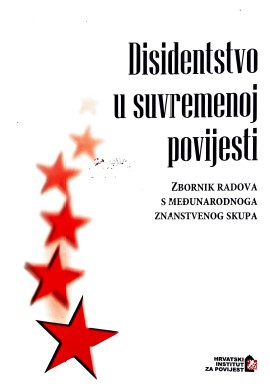
The opus of the lawyer Ivo Politeo (1887-1956), rich as it is encompasses a wide intellectual and chronological framework. This research text provides an arena to consider Politeo’s reactions to the unbridled encroachment of the state into the autonomous civil sphere in the historical context of Monarchist and Communist Yugoslavia. For Politeo’s understanding of political power in the epoch of Monarchist Yugoslavia (from 1920 to 1941) his cooperative efforts with the journal Nova Evropa [New Europe], a subject that has not been written about at all, is particularly important. Nova Evropa appeared on Zagreb’s intellectual horizon in 1920, covering such fields as politics, litera-ture, contemporary history, law and anthropology. The range of criticism of Yugoslavia’s pseudo-Parliamentarianism offered by Politeo and the intellectual circle around Nova Evropa is well-illustrated by the document known by the title “the Zagreb Memorandum’’ which came to be on 4 and 5 November 1934 wherein it was requested of the Regency to restore civil freedoms to the people. The other major current of Politeo’s discourse during the 1920s and 1930s was directed at concrete legal practice in the domain of the extraordinary Yugoslav laws which incriminated politically penalized acts. These laws were the core of the instrumental violence of the state apparatus and the spread of the web of the police. In his homeland Politeo is above all known as a defense lawyer for people of quite varying ideological orientations and as the author of the book Politički delikt (1921) in which he rejects the notion of mixed political offenses because “there are no pure of mixed absolute or relative political offenses but rather only ‘political offenses’ whose motive and purpose is political’’.
More...